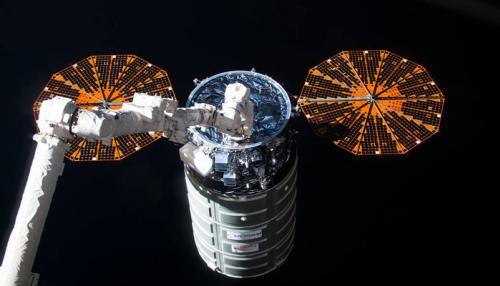- News>
- Space
Cygnus cargo spacecraft set to depart International Space Station today

The Cygnus cargo ship carrying more than 5,100 pounds of food, supplies arrived at the space station October 16.
New Delhi: Orbital ATK’s Cygnus cargo spacecraft is all set to leave the International Space Station (ISS) at 8:20 a.m. EST Monday, November 21.
The Cygnus cargo ship carrying more than 5,100 pounds of food, supplies arrived at the space station October 16 to support science experiments from around the world.
The spaceship was launched on October 17 from NASA's Wallops Flight Facility in Virginia, marking the first launch of Orbital's revamped Antares rocket since a previous version exploded shortly after liftoff two years ago.
As per NASA, the Cygnus spacecraft will be detached from the Earth-facing side of the station's Unity module using the Canadarm2 robotic arm, operated by ground controllers. Robotics controllers will maneuver Cygnus into place, and then Expedition 50 robotic arm operators Shane Kimbrough of NASA and Thomas Pesquet of ESA (European Space Agency) will give the command for its release.
Experiments delivered on Cygnus supported NASA and other research investigations during Expeditions 49 and 50, including studies in biology, biotechnology, physical science and Earth science - research that impacts life on Earth.
Five hours after departing the station, the Saffire-II experiment will intentionally ignite a fire inside a module aboard the uncrewed spacecraft. The second in a series of three, the experiment allows researchers to study a realistic fire on an exploration spacecraft, says NASA.
Instruments on the Cygnus will measure flame growth, oxygen use and more.
Cygnus also will release four LEMUR CubeSats from an external deployer on Friday, November 25, sending them to join a remote sensing satellite constellation that provides global ship tracking and weather monitoring.
NASA will begin Live coverage of the spacecraft departure starting at 8 a.m. both on NASA Television and the agency’s website.
NASA further adds that the spacecraft will remain in orbit until Sunday, November 27, when its engines will fire twice, pushing it into Earth's atmosphere, where it will burn up over the Pacific Ocean.
